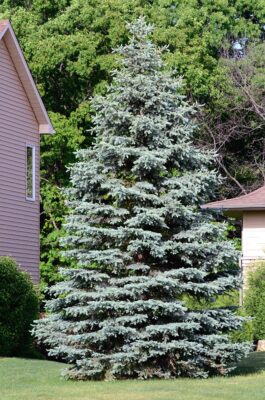Blog, What's Wrong With My Trees?
What’s Wrong With My Trees? Foliar Diseases On Conifers
Common Foliar Fungal Diseases On Conifers
Foliar diseases on landscape conifers, such as pine and spruce, are most often caused by a fungus. The most common foliar fungal diseases on conifers are:
- Rhizosphaera needlecast of Colorado blue spruce
- Phomopsis and Kabatina blight of juniper
- Needle blights of pine (Diplodia, Dothistroma, and Lophodermium)

These diseases are common in landscape conifers in our region due to spring moisture, irrigation water that consistently contacts foliage, and the use of non-native species that are readily susceptible.
Signs & Symptoms of Foliar Diseases On Conifers
Signs and symptoms of foliar diseases on conifers may take a few years to notice and may vary depending on the disease, but common signs and symptoms include:
- Premature needle drop
- Browning of current season’s growth
- Discoloration or spots on the needles
- Canopy thinning
Treating Foliar Diseases Of Conifers
To prevent these diseases, select disease-resistant trees when planting, keep the trees adequately watered (avoiding contact with foliage from an irrigation system), and apply a thin layer of organic mulch. When using pruning tools to remove diseased tissue, sanitize them accordingly between cuts. Doing so will prevent pathogens from being transmitted to other parts of the trees.
If the disease is well-established, contact an ISA Certified Arborist to properly diagnose the disease, and they may prescribe an appropriate management tool, such as the use of contact or systemic fungicides.
